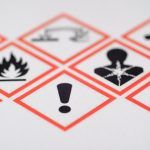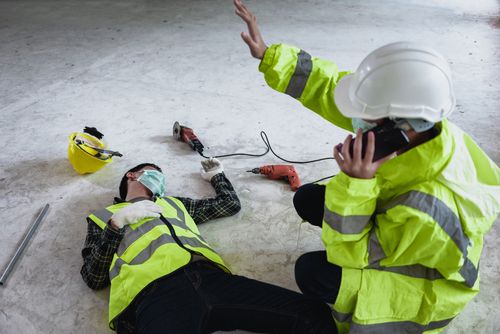
Reporting Workplace Accidents – What You Need to Know
As an employee or employer in Ontario, it is crucial to understand the process of reporting a workplace accident or injury. Not only is this essential for maintaining a safe and healthy work environment, but it is also a legal requirement under the Occupational Health and Safety Act.
This article will discuss the important things you need to know about reporting workplace accidents in Ontario. Whether you are an employer or an employee, this article will provide you with valuable information and insights to help you stay safe and compliant in the workplace.
The Process of Reporting a Workplace Injury or Accident

In Ontario, if you are a company that the Occupational Health and Safety Act covers, all workplace injuries and accidents must be reported.
To do this depends on the case. There are five major types of incidents, Critical injuries, non-critical injuries, workplace illness and workplace fatalities. There is also a fifth special class, a workplace accident where no one gets injured. First, let’s define how these types are classified.
Defining the Classifications of Workplace Injuries and Workplace Accidents
Critical Injury
A critical Injury is a serious injury and can include things like
- Life-threatening injuries
- Injuries that produce unconsciousness
- Substantial blood loss
- Major bone fractures (not fingers and toes)
- Major burns
- Amputation of a limb (not fingers and toes)
- Loss of eyesight
Non-Critical Injuries
Any injury that is not classified as a critical injury is referred to as non-critical injuries. Non-critical injuries can include
- Sprains
- Strains
- Cuts
- Bruises
- other types of injuries that do not result in permanent severe disfigurement or impairment
Workplace Illness
Exposure to workplace hazards that causes a disease or illness is referred to as a workplace illness. Workplace illnesses include incidents such as
- Illness resulting from exposure to toxic chemicals or materials
- Infectious diseases that transmit in the workplace.
Workplace Fatality
This type of incident is the most serious. If a worker dies due to a workplace injury, this is considered a workplace fatality. In this case, the employer must immediately notify the Chief Prevention Officer. Authorities will investigate to determine the cause of death and whether any safety violations took place.
Incidents with No Injuries
There are particular types of situations where no one gets injured, but they still have to be reported to the Ministry. These types of accidents can cause unsafe workplace conditions and must be reported. They are specific to the following types of workplaces
- Construction projects
- Mines and mining facilities
- Diving operations
- Workplaces with x-ray machines
You can find a comprehensive list of specific incidents here.
The Timeframes for Reporting Workplace Accidents and Injuries

Critical Injuries or Fatalities
If a person is critically injured or killed, before anything, the employer must call 911. After that, the employer must immediately notify the following parties;
- The Chief Prevention Officer
- The joint health and safety committee/ The health and safety representative
- The workers union
You have to do this even if the person involved is not an employee. However, in the case of a non-worker, in order to make this decision to report it or not, you should review the following criteria.
- The fatality or severe injury took place at the location where the employee was assigned to work or where it was reasonable for them to work.
- A rational link exists between the danger that led to the occurrence and a practical threat to the well-being and safety of workers.
If both of these criteria are met, the person concerned would need to file a report for the non-worker.
Important: You Must Not Disturb the Scene
In critical injuries and workplace fatalities, it is critical that the scene is not disturbed as much as possible. Leaving the scene as it is is essential for the investigation but is also a requirement under the OHSA (Subsection 51(2)). Because of this requirement, you must ensure that no one interferes with the scene of the incident this includes taking away anything (that could be used as evidence) or disturbing destroying or altering the scene in any way
There are some circumstances in which the scene can be disturbed. It can be disturbed if it is necessary to do so to:
- Save a life or relieve human suffering
- Maintaining a public utility or transport system,
- Prevent further unnecessary damage to equipment or property.
Alternatively, a site may be disturbed if a Chief Prevention Officer inspector gives you permission.
Non Critical and Workplace Illness
The time frame is slightly extended for non-critical incidents and Workplace Illness, but the matter should still be considered urgent.
Workplace Illness
For workplace illness, you have four days to submit written notice to the following parties;
- The Chief Prevention Officer
- The joint health and safety committee/ The health and safety representative
- The workers union
Non-Critical Workplace Injury
If a person receives a non-critical workplace injury, it must be reported under two circumstances, If a person is either
- injured and unable to do their usual work
- requires medical attention.
However, this type of injury does not need to be reported to the Chief Prevention Officer, Unless an inspector asks for it.
However, the employer must still submit a written report to both your Joint Health and Safety Committee, your health and safety representative, and the workers union. The person concerned must give the written notification within four days of the incident.
There are certain situations where an employer must submit a written notification to the Chief Prevention Officer for a non-critical injury in the following two scenarios
- a person is injured and unable to do their usual work
- requires medical attention because of a workplace injury incident or accident
An Incident with No Injuries
In incidents where no one is injured, the employer is required to submit written notice within two days (of the incident) to the Chief Prevention Officer. These are only in specific situations in specific workplaces as listed here.
The process is the same as others, employers must submit their written notice to:
- The Chief Prevention Officer
- The joint health and safety committee/ The health and safety representative

- The workers union
Contacting the Chief Prevention Officer
To contact the Chief Prevention Officer, you can visit their website for more info, call them and, in most cases, you would send them an appropriate contact form.
Website
Their website contains all the educational resources and contact information.
Telephone – 1-877-202-0008
Their health and safety contact centre line operates 24/7 and is the number you must call for urgent matters such as critical injuries and fatalities.
Report Forms
Incident forms for workplace injuries and accidents can be found here
What You Should Keep Track Of
If you are involved in a workplace injury or accident in Ontario, keeping track of certain information and documentation is important. Here are some things that you should keep track of:
Immediate items
- It is important to accurately record the date, time, and location of the incident.
- Write down a detailed description of what happened, including how the incident occurred and any contributing factors.
- Keep track of any injuries sustained as a result of the incident, including any medical treatment you received.
- If there were any witnesses to the incident, make sure to get their contact information.
Long-term items and documentation
- Keep a copy of any medical records or reports related to the incident.
- Both employers and employees need to keep a record of any communications related to the incident. These may be important for insurance claims and further investigations
- Any Communication with the Chief Prevention Officer or the Workplace Safety and Insurance Board (WSIB). Include the incident form you submitted to the Chief Prevention Officer. You will need to share it with your health and safety committee and the workers union.
By keeping track of this information, you can help ensure that you have an accurate record of the incident and any injuries sustained and that you are prepared to provide this information to the appropriate parties, such as your employer or the Chief Prevention Officer, if necessary. This information can also be helpful if an employer or employee needs to file a workers’ compensation claim or pursue legal action related to the incident.
Filing a Complaint
https://www.ontario.ca/page/filing-workplace-health-and-safety-complaint
If your workplace follows the OHSA and you are an employee, you have a duty to report unsafe working behaviour, hazards and harassment.
The first step employees should take is to inform their supervisor of the hazard or unsafe behaviour. You should also report it to your health and safety committee. If the incident is corrected there is no need to file a report. However, if you feel like you can’t bring the incident up to any of those two parties you can file a report to the Chief Prevention Officer. You can file a complaint here.
The Best Solution Is Prevention: Trust Advanced CT to Provide the Best Safety Training to Stop Injuries and Accidents from Happening in the First Place.
To keep the workplace safe for all employees, it is crucial to be aware of potential hazards and take preventive measures. At Advanced CT, we offer top-notch consultation and training services to equip you with the necessary skills and knowledge.
With our extensive experience in providing effective workplace safety solutions since 1998, you can trust that our programs are backed by credentials and can be delivered in person or online for your convenience. Get in touch with us today to learn more.




